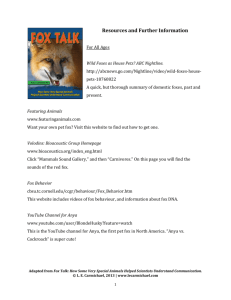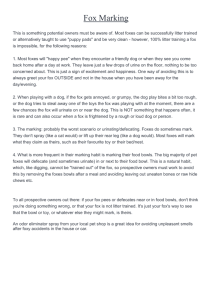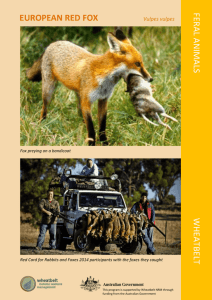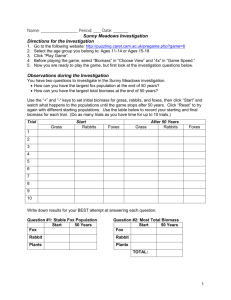May 2012 Higher paper sample answers
advertisement
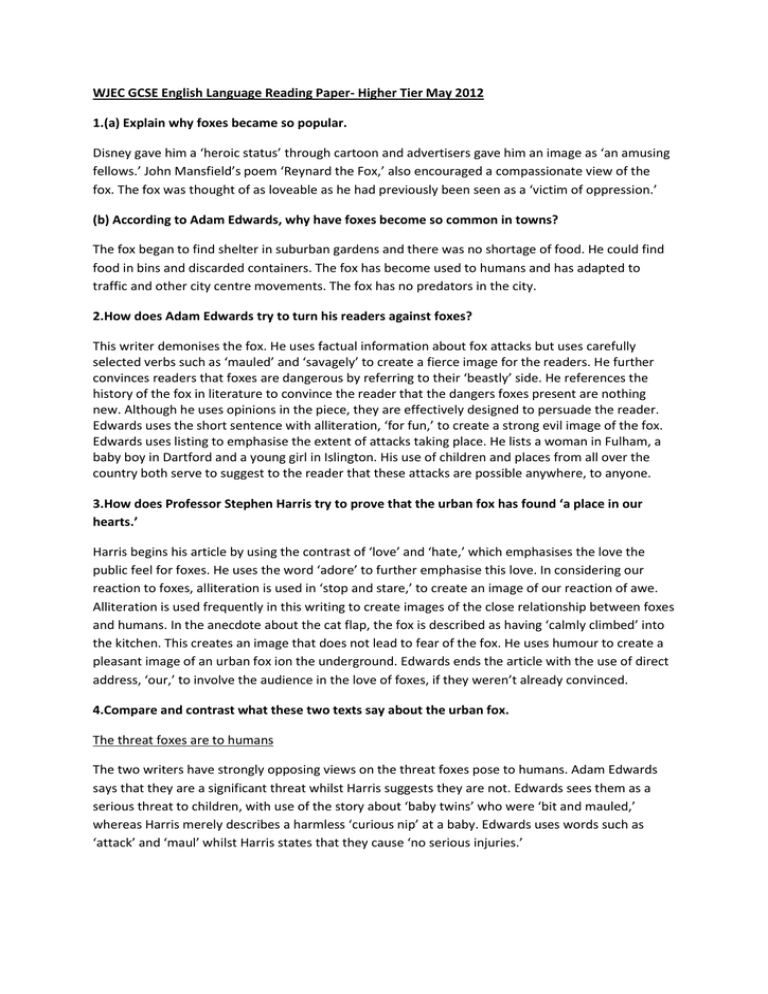
WJEC GCSE English Language Reading Paper- Higher Tier May 2012 1.(a) Explain why foxes became so popular. Disney gave him a ‘heroic status’ through cartoon and advertisers gave him an image as ‘an amusing fellows.’ John Mansfield’s poem ‘Reynard the Fox,’ also encouraged a compassionate view of the fox. The fox was thought of as loveable as he had previously been seen as a ‘victim of oppression.’ (b) According to Adam Edwards, why have foxes become so common in towns? The fox began to find shelter in suburban gardens and there was no shortage of food. He could find food in bins and discarded containers. The fox has become used to humans and has adapted to traffic and other city centre movements. The fox has no predators in the city. 2.How does Adam Edwards try to turn his readers against foxes? This writer demonises the fox. He uses factual information about fox attacks but uses carefully selected verbs such as ‘mauled’ and ‘savagely’ to create a fierce image for the readers. He further convinces readers that foxes are dangerous by referring to their ‘beastly’ side. He references the history of the fox in literature to convince the reader that the dangers foxes present are nothing new. Although he uses opinions in the piece, they are effectively designed to persuade the reader. Edwards uses the short sentence with alliteration, ‘for fun,’ to create a strong evil image of the fox. Edwards uses listing to emphasise the extent of attacks taking place. He lists a woman in Fulham, a baby boy in Dartford and a young girl in Islington. His use of children and places from all over the country both serve to suggest to the reader that these attacks are possible anywhere, to anyone. 3.How does Professor Stephen Harris try to prove that the urban fox has found ‘a place in our hearts.’ Harris begins his article by using the contrast of ‘love’ and ‘hate,’ which emphasises the love the public feel for foxes. He uses the word ‘adore’ to further emphasise this love. In considering our reaction to foxes, alliteration is used in ‘stop and stare,’ to create an image of our reaction of awe. Alliteration is used frequently in this writing to create images of the close relationship between foxes and humans. In the anecdote about the cat flap, the fox is described as having ‘calmly climbed’ into the kitchen. This creates an image that does not lead to fear of the fox. He uses humour to create a pleasant image of an urban fox ion the underground. Edwards ends the article with the use of direct address, ‘our,’ to involve the audience in the love of foxes, if they weren’t already convinced. 4.Compare and contrast what these two texts say about the urban fox. The threat foxes are to humans The two writers have strongly opposing views on the threat foxes pose to humans. Adam Edwards says that they are a significant threat whilst Harris suggests they are not. Edwards sees them as a serious threat to children, with use of the story about ‘baby twins’ who were ‘bit and mauled,’ whereas Harris merely describes a harmless ‘curious nip’ at a baby. Edwards uses words such as ‘attack’ and ‘maul’ whilst Harris states that they cause ‘no serious injuries.’ The threat foxes are to other animals Once again, the authors disagree on this threat. Edwards suggests the fox is a vicious predator whilst Harris is less concerned about the threat. Harris states that they eat ‘words, insects and rats’ whilst Edwards suggests the fox kills ‘for fun.’ He describes captive penguins being killed and the Queen’s flamingos being decapitated. Harris suggests that they will eat a ‘small pet’ but does not use the word ‘kill’, as Edwards does in reference to pet rabbits.


